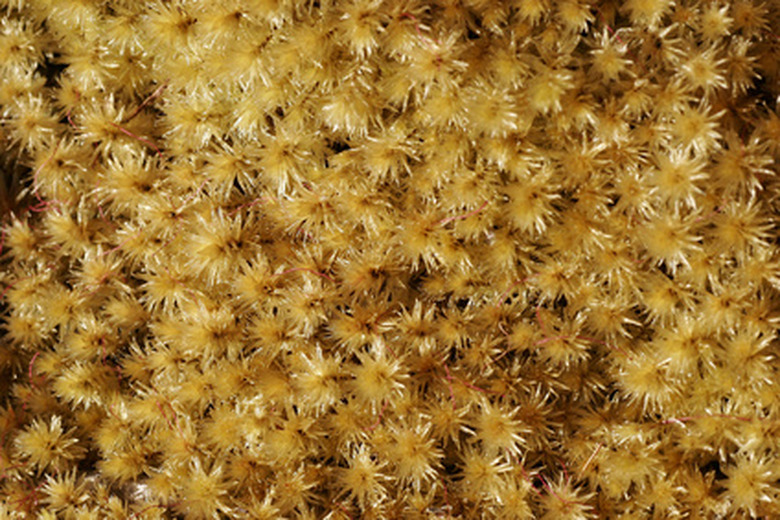Alternatives To Sphagnum Moss
Sphagnum moss (Spapillosum) is a byproduct of acid bogs in Germany, Ireland and Canada. It is capable of absorbing 10 to 20 times its own weight in water, making it a popular choice when amending overly-porous soil types, such as sandy soils. While sphagnum peat has many characteristics which make it a good choice for soils, its one drawback is the potential extinction of this growing medium due to excessive harvesting. There are some alternatives available that are sourced from more easily replenished sources.
Coir Dust
Coir is the fibrous, middle layer of the coconut used to make brushes, twine and mattress stuffing. The material made from the small, leftover pieces of these fibers is known as coir dust. When coir dust was compared to sphagnum peat at Auburn University, the University of Arkansas and A&L Analytical Laboratories in Tennessee, it was found to be a superior product in many instances. Coir dust has better water absorption and gave the soil better drainage capabilities. The lower pH level of coir dust, compared to sphagnum peat, meant less lime was needed to balance the soil's pH levels. Coir dust was tested against sphagnum peat in 1992 as a growing medium for tomatoes, lettuce and broccoli. The results were quicker seed germination in the coir dust and larger sided seedlings.
- Sphagnum moss (Spapillosum) is a byproduct of acid bogs in Germany, Ireland and Canada.
- The lower pH level of coir dust, compared to sphagnum peat, meant less lime was needed to balance the soil's pH levels.
Perlite
This lightweight, white material is a result of heated volcanic rock. Perlite lightens soil texture, improves drainage and is pH neutral, requiring no addition of lime to balance the soil's pH. Perlite does not break down in the soil, making it a long-lasting alternative to sphagnum peat, and can hold three to four times its own weight in water without becoming soggy. Due to its light weight, perlite is often used as a replacement for sand, as well as sphagnum peat, when amending heavy soils.
Composted Pine Bark
Composted pine bark lightens soil texture and improves porosity, making it a good choice when amending clay soils. Its pH level is 5 to 6.5, making it only slightly acidic when compared to sphagnum peat's 3.5 to 4.0 pH level. Composted pine bark is best suited as a soil amendment when growing woody ornamental and herb plants, but it is recommended to only substitute some of the total amount of sphagnum peat with this material. Composted pine bark has the ability to increase a plant's resistance against disease, but it is recommended to supplement with more nitrogen when amending soil with this material.
- This lightweight, white material is a result of heated volcanic rock.
- Composted pine bark is best suited as a soil amendment when growing woody ornamental and herb plants, but it is recommended to only substitute some of the total amount of sphagnum peat with this material.
